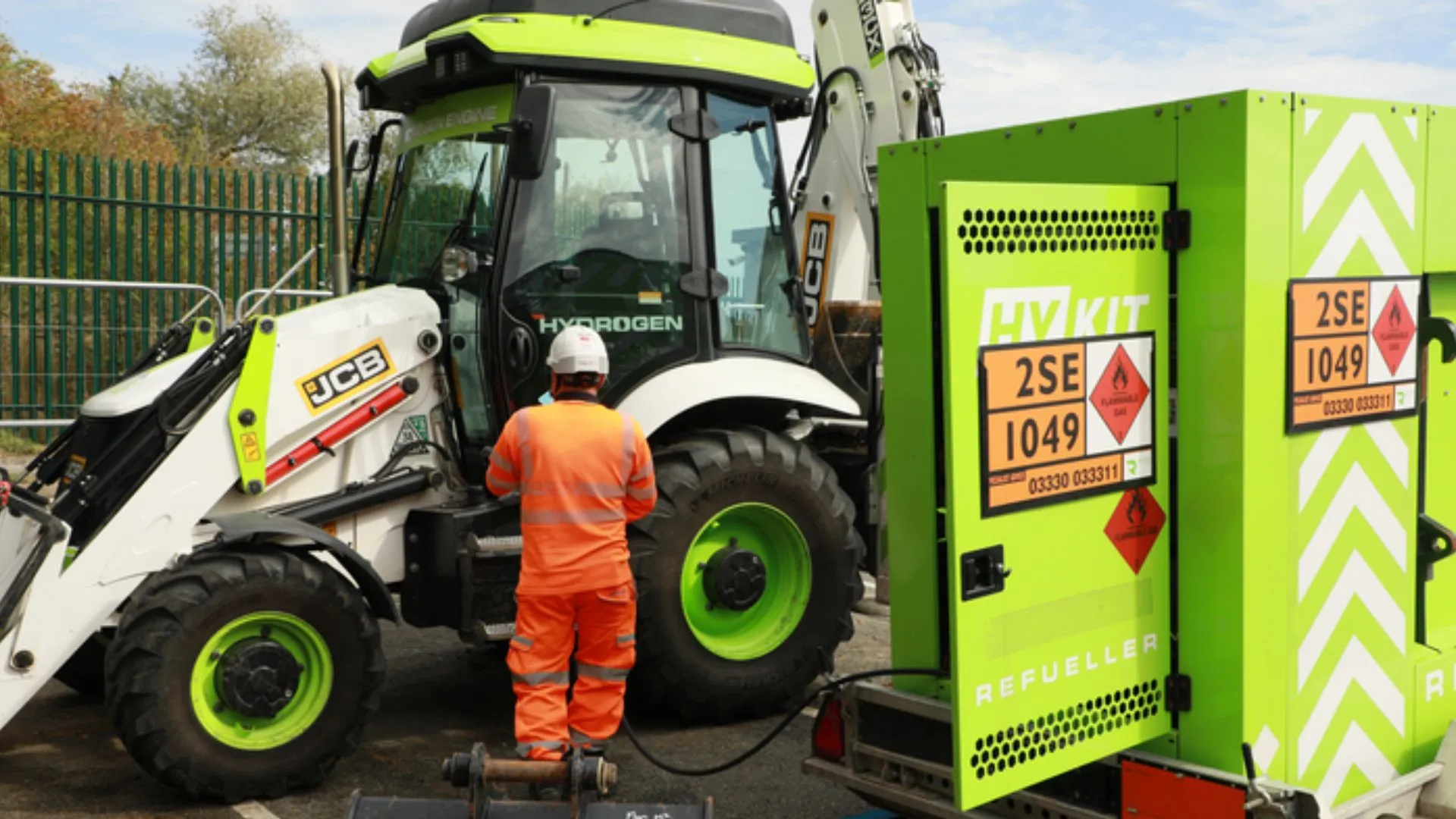
The UK’s £10 billion Lower Thames Crossing has become Britain’s first major infrastructure project to commit to carbon-neutral construction.
The milestone was marked on Wednesday by the live deployment of a British-made JCB hydrogen-powered backhoe loader on site for survey work.
National Highways confirmed that the machine, operated by Skanska and supplied by Flannery Plant Hire, is powered by hydrogen from Ryze. It is the first time such machinery, which runs on a hydrogen-fuelled internal combustion engine, has been used outside a test environment.
Hydrogen machinery cuts carbon on site
The digger has already cut more than 1.1 US tons of CO₂ equivalent in its first month of operation. National Highways said this move is part of a broader plan to eliminate diesel from worksites by 2027.
The initiative is supported by the UK’s largest-ever purchase of green hydrogen for a construction project.
“This project will prove that the British construction industry has the vision and skills to build the projects needed to drive growth in a way that enhances, not impacts, the local environment,” mentioned Matt Palmer, executive director for the Lower Thames Crossing.
JCB managing director Steve Fox described the live deployment as a “huge milestone,” highlighting that it is the first time hydrogen has been proven as a carbon-neutral fuel in a working construction machine on a major UK project.
Low-carbon materials and construction targets
The Lower Thames Crossing, which will connect Kent and Essex via a new road and tunnel, aims to reduce its construction carbon footprint by 70%.
The project will achieve this by using low-carbon materials, including steel and concrete, and adopting innovative construction methods. Any remaining emissions will be responsibly offset in the early 2030s.
The hydrogen digger’s deployment follows earlier trials at Gallagher’s Hermitage Quarry in Kent. Final testing and validation are underway, with plans for full production at JCB’s Rocester factory in Staffordshire in 2026.
A road to cleaner, faster travel
Planning permission for the Lower Thames Crossing was granted in March 2025. The project aims to double road capacity across the Thames, ease congestion at the Dartford Crossing, and provide a direct freight route linking the South East ports, the Midlands, and the North. Construction is expected to begin in 2026, with the new route opening in the early 2030s.
Roads and Buses Minister Simon Lightwood highlighted the wider impact of the project. He said the Lower Thames Crossing will “slash journey times for motorists and our vital freight industry.”
He added that its construction will “also be completely carbon neutral, showing major infrastructure projects can be delivered hand in hand with our ambitious environmental targets.”
Lightwood noted the project is “built and powered by British businesses” and is “creating economic growth and unlocking jobs, all part of our government’s Plan for Change.”
The project benchmarks future UK infrastructure, showing that large-scale projects can combine growth with sustainability.



